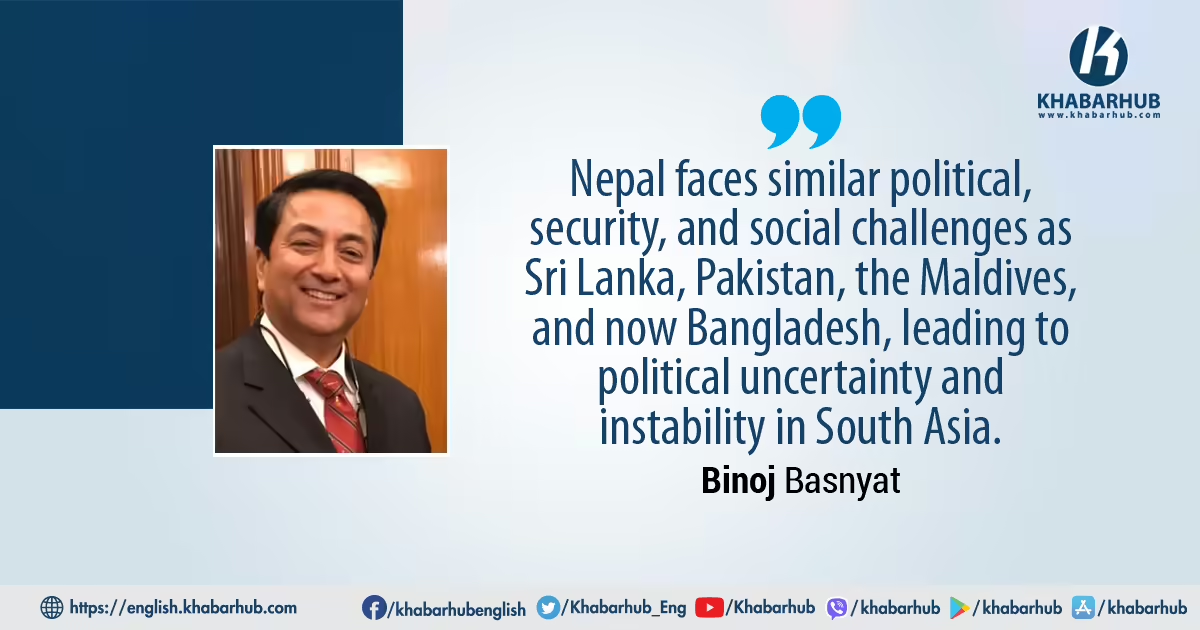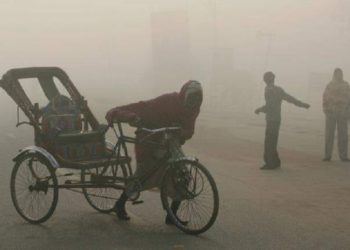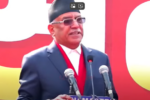With the global competition underway, nations of South Asia are falling into the geopolitical long-game and being strategically trapped.
National politics is being influenced, and so are the political parties’ pickings of flanks.
The Maldives episode is one example, where pro-Beijing leader President Mohamed Muizzu, in late 2023, took sides.
His ‘India Out’ campaign aimed to remove 88 Indian soldiers stationed on the island, indicating a clear shift in foreign policy away from its traditional close ties with India and giving space for China’s interests in the maritime.
On August 5th, 76-year-old Prime Minister Sheikh Hasina, daughter of Sheikh Mujibur Rahman, the founding father of Bangladesh, faced a similar outbreak.
The difference is that Hasina was expelled after a month-long protest, with 300 lives lost, leaving a void in the political and security realms, while Muizzu came to power through a peaceful electoral transition.
The governments of the U.K. and the U.S. termed Bangladesh’s election “not fair and free” and remained concerned about the arrests of thousands of political opposition members, the lack of all-party participation, and irregularities on election day, but said they would continue cooperation.
In the 12th election since independence in 1971, Hasina’s Awami League party swept to a fourth consecutive term in power, winning 222 out of 298 seats in the parliament, or 75 percent of the seats.
The Bangladesh National Party (BNP), the main opposition, boycotted the vote, leading to a low turnout.
Bangladesh’s economy was growing, incomes were rising, and various social indicators were moving in a positive direction, but there were enduring drawbacks, including a high inflation rate, widening economic disparities, one-third unemployed youths, and two decades of Awami League political favoritism and suppression of demonstrations, which were major considerations in the political upheaval forcing Hasina to flee.
This situation led Chief of the Army General Waker-Uz-Zaman to announce Hasina’s resignation and manage Hasina’s evacuation to India, as well as coordinate with President Mohammed Shahabuddin, who is also the Commander-in-Chief of the Armed Forces, for an interim administration to oversee elections with the participation of all political forces.
More than 40 percent of Bangladeshis between the ages of 15 and 24 are neither studying, employed, nor training for jobs. These realities drove hundreds of thousands to join the movement.
The country’s armed forces, which overthrew elected governments in the 1970s and 1980s and attempted coups in later years, have not intervened and have called for tranquility.
Generals need to garner the confidence and trust of the Bangladeshis due to past political interventions, which have weakened the country’s democracy.
At the same time, the risk of active terrorist organizations such as Hizb-ut-Tahrir (HuT), Hizb-ut-Tawhid (HT), Allah’r Dal, Al Qaeda/Al-Qaeda in the Indian Subcontinent (AQIS), and Al Qaeda/Al-Qaeda in the Indian Subcontinent (AQIS) activities and political affiliations could bring spillover challenges to South Asia.
The fundamentalists and extremists targeting the minority Hindu population, which makes up 8 percent of the 170 million, have caused concern, though senior BNP leader Tarique Rahman, son of former PM Khaleda Zia, has appealed for calm. Preventive measures have been taken for protection.
The majority of the Hindu population has strong ties with the Awami League, which postures as a secular force compared to other political forces.
Geopolitical Context
The July “Long March to Dhaka” echoed the merging of two sources of discontent. The first was the foreboding among students about the reservation quota system: 56 percent of civil service jobs were reserved for particular groups of people, including 30 percent for descendants of veterans of the 1971 war of independence against Pakistan.
The system, which Hasina had scrapped in 2018 after months of protests, was reinstated by the High Court in June.
Reservations and quotas are temporary mechanisms to uplift certain marginalized communities, which were then used for political advantage.
The quota issue was simply a spark. Fifteen percent of youths are unemployed compared to 6 percent in 2010.
More than 40 percent of Bangladeshis between the ages of 15 and 24 are neither studying, employed, nor training for jobs. These realities drove hundreds of thousands to join the movement.
Everything changed on July 15 when frustrated students, the vanguard of national politics, took to the streets.
The protest intensified when Hasina referred to the agitators as “razakars” (a generic term for those who opposed the Liberation War of 1971)—a hated paramilitary force supported by the Pakistan army during the war of independence.
This provocative remark questioned their patriotism and integrity, drawing in a geopolitical context.
South Asia is experiencing anxious straits with an underestimation of traditional power, India.
Sri Lanka faced political, economic, security, and social unrest in May 2022. Pakistan has experienced an economic crisis as part of the 2022 political unrest.
The Maldives adjusted its assurances with China. Modi 3.0 with the “First Neighbor” policy faces significant challenges in defending India from regional and global setbacks, rather than focusing on development and progress in influencing South Asians.
In all these interactions, global powers—the U.S., emerging power China, and rising power India—create a multifaceted strategic triangle of fractious competences and intentions.
One reason for the U.S. withdrawal from Afghanistan was to dedicate resources and precedence to continental and maritime South Asia.
Priorities must align with the deteriorating China-India relations, the rising China-U.S. rivalry, and expanding India-U.S. strategic cooperation, adding to the significant competition with China in the Indo-Pacific.
The Bangladesh political upheaval is a fundamental indicator of the challenges and opportunities for peace and stability in South Asia.
Conclusion
Political and security instability in Bangladesh results from strategic missteps related to Hasina’s prolonged stay in power, BNP’s non-participation in elections, and the politicization of the administration.
Party affiliation became a major priority for promotion and appointment, avoiding meritocracy and opportunities for all citizens.
The revolution began on July 15 with opposition political parties, notably the Islami Chhatra Shibir (ICS) of the Jamaat-e-Islami and the Jatiyatabadi Chhatra Dal (JCD) of the BNP, unleashing massive violence.
Nepal’s shift to more antagonistic, security-driven political and economic relations will not be trouble-free, but political will and constructive diplomacy are essential as Nepal seeks a national government for economic development and a Nepali-defined political system and governance model.
The Awami League’s student wing, the Bangladesh Chhatra League, opposed the uprising. The army was deployed on the 18th.
The government’s lack of anticipation of the people’s aspirations has led to another revolutionary phase.
Reservations and quotas are temporary mechanisms to uplift certain marginalized communities, which were then used for political advantage.
The geopolitical and geoeconomic environment in South Asia cannot be fully understood through the India-Pakistan or China-India lens alone.
One critical triangle involves China, India, and the U.S. Present-day realities, as well as perceptions and misperceptions within this triangle, are rooted in early Cold War history, intentions, and capabilities.
The regional posture is determined by acknowledging India’s power asymmetry relative to China and China’s power gap vis-à-vis the U.S.
New Delhi’s bid to enhance its deterrent capabilities with U.S. assistance poses a challenge to Beijing.
Similarly, China’s growing military capabilities and defense modernization, along with its expanding role as a development and security partner to many states in India’s immediate neighborhood, provoke critical anxieties in New Delhi and, to a lesser extent, in Washington.
The Bangladesh Army has played a crucial role in maintaining political stability without a military coup.
This has allowed political leaders to address the issues they have caused by amending provisions to meet the aspirations of the people, acknowledging domestic opposition, and recognizing geopolitical shifts.
As Bangladesh faces a challenging road ahead, so do other South Asian nations, and the rising powers China and India, as well as global rivals China and the U.S. Nepal and other South Asian nations must draw lessons and amend provisions to address social inequalities and political grievances.
Nepal faces similar political, security, and social challenges as Sri Lanka, Pakistan, the Maldives, and now Bangladesh, leading to political uncertainty and instability in South Asia.
Nepal’s shift to more antagonistic, security-driven political and economic relations will not be trouble-free, but political will and constructive diplomacy are essential as Nepal seeks a national government for economic development and a Nepali-defined political system and governance model.
(The author is a Strategic Analyst, Major General (Retd) of the Nepali Army, and is associated with Rangsit University, Thailand)









Comment